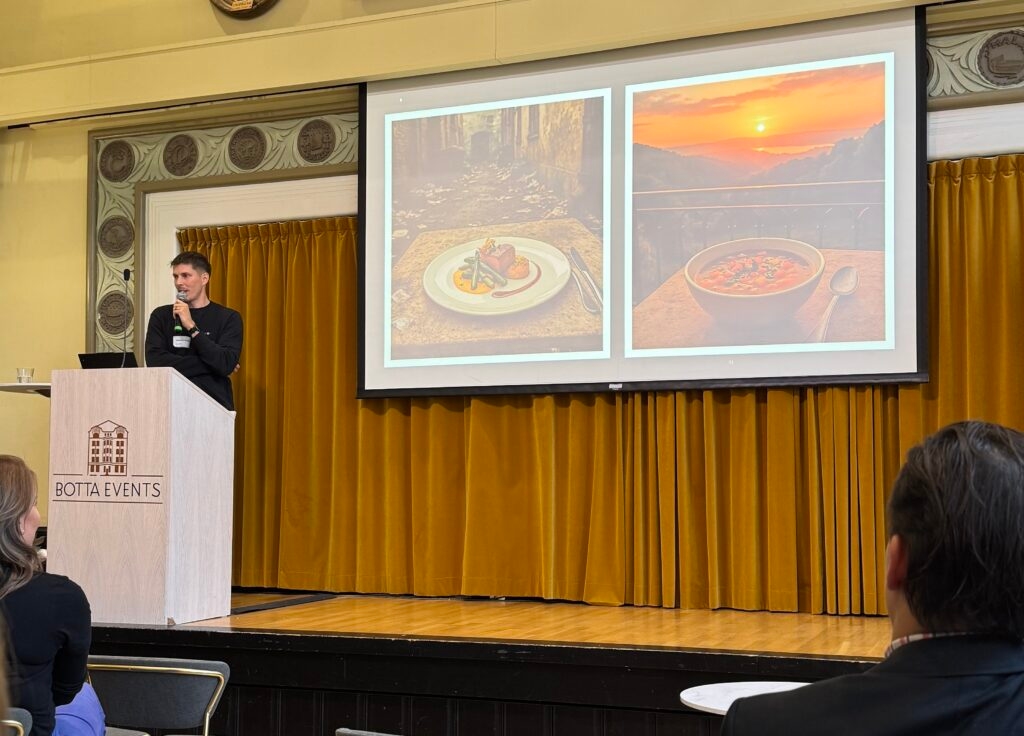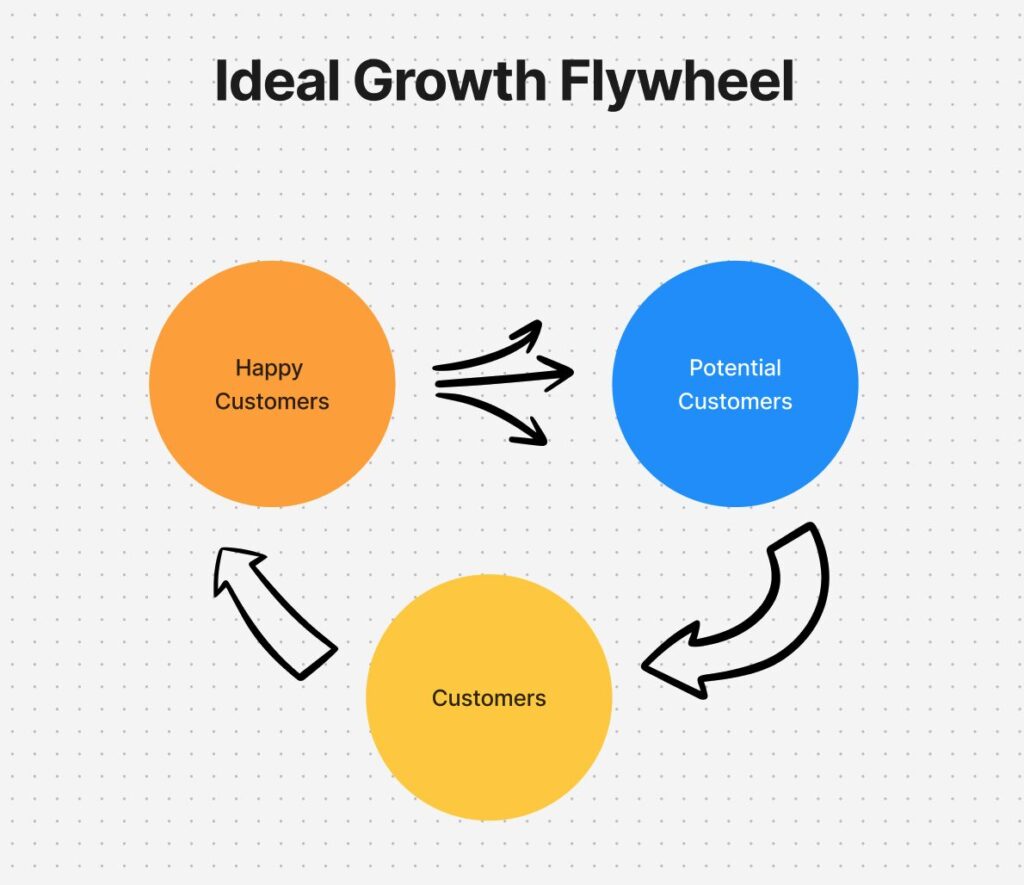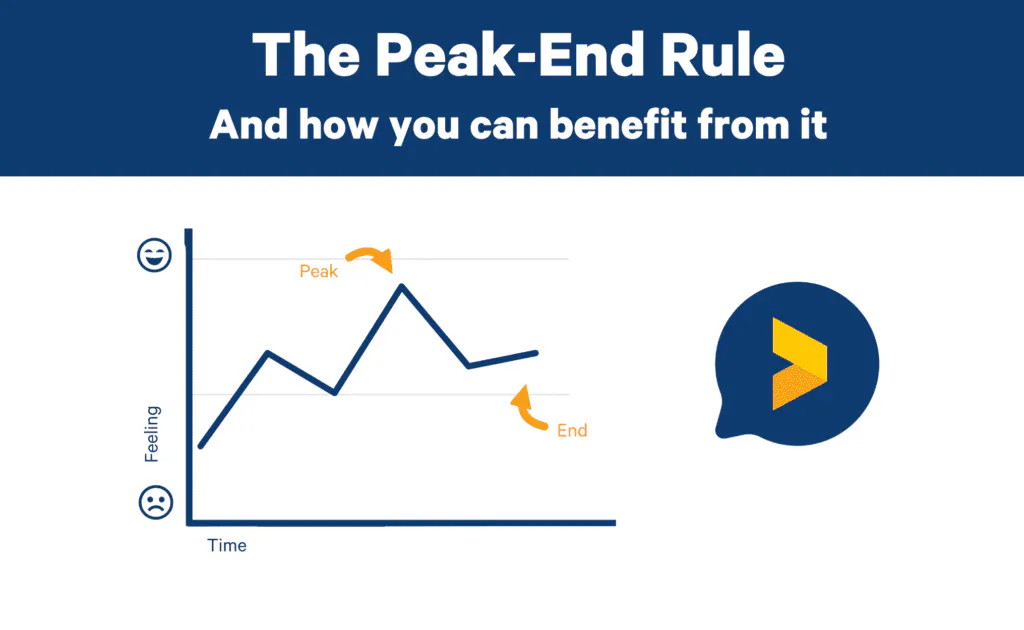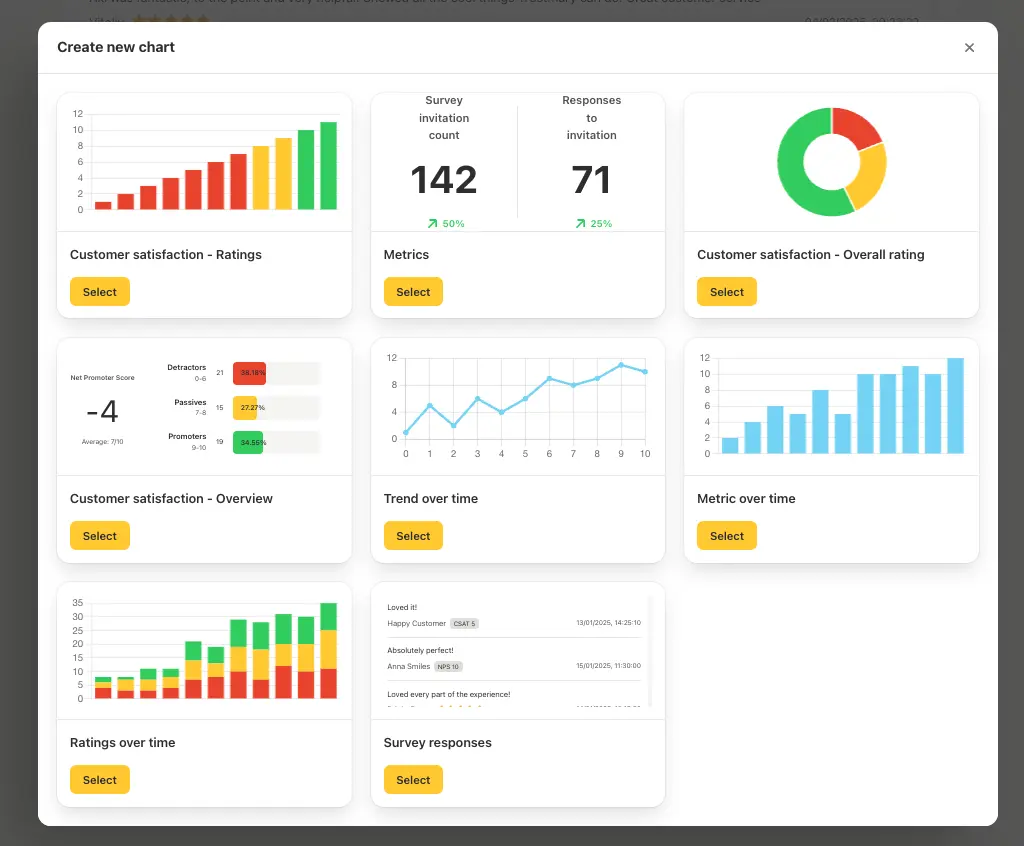Customer Experience Design & Customer Journey Mapping

If you want to grow your business, you should constantly improve your customer experience.
Research shows that customers are willing to pay more for a better experience.
Improving customer experience only happens if you know your customers: their preferences, dislikes, intentions, and pain points. In short, your customers need to be at the center of everything you do.
Don’t you want your customers to become loyal and your best referrers? Of course.
How does that happen? The first step is using something called customer journey mapping.
In this post, I’ll talk about customer journey mapping, why it’s important for all businesses, and how to create a customer journey for your business – and profit from doing that.
Many companies struggle to understand what truly shapes their customers’ overall experience. Most of their focus goes into delivering the core product or service, and once that’s done, they consider the job finished. But what if the product itself isn’t the heart of the experience?
Take a restaurant, for example: is the food really the main factor, or do atmosphere, service, and emotions play a bigger role?
You’d probably rate a simple meal with great ambiance and friendly service higher than a gourmet dish in unpleasant surroundings. The same applies to every business; customer experience isn’t just about what you sell, but how it’s delivered and how it makes people feel.
If you’re unsure what influences your customers’ full experience, let’s find out together.

Customer Experience Design
Customer experience design is the process internal teams follow to optimize customer experience:
- Before conversion (how easy website is to navigate, can one find the info they're looking for,...)
- During converting (for example, downloading something, buying, booking a call)
- After conversion (This is where the journey with your company begins!)
To summarize, customer experience design is all about mapping out all customer interactions and figuring out what works and what doesn't.
Keep in mind that being customer centric is an on-going process, not something you do once and forget about it. Quite the contrary: You start by doing a customer experience journey map, after which you gather user experience and customer insights and start optimizing different stages of your customer experience for your customer personas.

I admit that this was a lot of information all at once, so let's break it down into smaller sections.
I've helped hundreds of companies optimize their customer experience and reduce customer churn, so let's get into it.
What Is a Customer Journey Map?
A customer journey map is a visual representation of your customer’s journey. Sometimes, it’s also called the buyer journey or user journey.
Customer journey mapping visualizes how customers experience your brand at every touchpoint with your entire organization. This will help you solve problems, increase customer loyalty, and make better business decisions with the customer at the center.
A good customer journey map tracks everything from the first time a customer heard about you through your social media marketing to their online interactions with your products to any conversation with customer service and more.
Characteristics of a Good Customer Journey Map
- Based on quantitative data, customer interviews, and internal knowledge
- Clear to understand
- Covers multiple customer personas
- Constantly updated based on user research
- Focus on the big picture
- Basic details are on point
- Pain points of existing customers are highlighted
Engaging in this process helps you see things from the customers’ perspective. It helps you better optimize and personalize the customer experience in the long run.
Try to really step into the customer's shoes for a second.
Real-Life Example: How to Create Customer Journey Maps
When a tech company wanted to figure out how its customers actually see the process, it wrote all the stages on separate pieces of paper.
The customer experience management team then booked a conference room where they placed the sheets of paper in a linear order. They then included more teams and walked through the process with them in the conference room.
As a result, they started to facilitate a truly customer centric culture and figured out some unlogical points within the customer journey. For example, the invoice was sent at the wrong time, and the invoice itself didn't include the necessary information for the person who received the invoice.
By making the changes, the company saw a major uplift in customer satisfaction and got fewer inquiries about the invoices.
This was just a tiny example, but the peak-end rule applies here as well. And the small things add up in the long run! You never know what is the final straw.

Almost 46% of business professionals believe their biggest priority in the next five years is customer experience. You can’t afford to ignore the vital role a customer journey map plays in your business.
Why is Customer Journey Mapping Important?
In addition to helping you retain current customers and understand how people find you in the first place, there are major other benefits as well. Let’s look at five of them.
Deeper Understanding of Customers
When you understand someone better, you start to feel empathy towards the problems and issues they face.
A street-level definition of empathy means you put yourself in someone else’s shoes. Empathizing as a business leader or marketer means you see your business as your customer does: how they find you, what interests them, what turns them away, etc.
Creating a customer journey map allows you to take a step back from your world and enter theirs. This gives you the freedom to question everything about the process of finding leads, qualifying them, getting to a point of decision, and so on.
Empathizing with your customers leads to a better experience for them.
Isn’t solving your customers' pain points the reason why your company was founded?
Visualize Emotions, not Just Behaviors
A customer’s journey is often emotional. It’s hard to turn feelings into data. How is it even possible to know what a potential buyer is feeling when they use your product or service?
A well-researched customer lifecycle can document feelings based on the customer feedback you’ve received through your communication channels, or directly from your customer support team.
If your customer support team isn’t documenting the emotions communicated by your customers, it’s time they start. Observing customer emotions and responding to them will help customers feel understood, appreciated, and valued. Over time, that builds trust.
Tracking customers' emotions has become easier thanks to meeting recording tools. One can use conversation analysis to analyze video and phone calls on a very nitty-gritty level.
Personalize and Optimize Customer Experience
Once you empathize with your customers, you’re able to optimize. In other words, understanding your customers results in the ability to tailor the process to meet their needs.
Over 84% of customers indicate that they’d like to be treated like a human rather than a number.
The only way to do that is to customize their experience across all touchpoints. Whether it’s a text from bulk messaging software about a flash sale or an email newsletter about an upcoming event or anything else, you’ll send them what they want because you know them.
Say it together: “Empathizing leads to optimizing.”
Understand Complex Customer Paths
Digital marketing is at an all-time high, and customer journeys are never linear. There can be a dozen interactions with a company before someone even converts into a lead, let alone into a customer.
Customers use multiple channels to research and communicate with brands. One day, they open to a company’s email newsletter, and the next day they’re engaging with the company's social media post.
Things can get more complex when you consider generational differences and the nuances of B2B interactions (multiple decision-makers, etc.).
Visually presenting these variables helps you see who might be feeling and experiencing what at different phases of the journey. To actually know what a customer needs at a certain stage, you need to ask for customer feedback at various stages.
This information should be used to carefully consider what information to provide and how at specific times.
Increase Revenue
Finally, all of this leads to more revenue. Companies that lead in customer experience outperform late adopters by nearly 80%.
The reason for this is simple: people continue to buy from companies that value them.
You can’t afford not tocare about your customers.
Now, let’s get to the practical level of how to build your customer journey map.
How to Create the Perfect Customer Journey Map?
Highly complex maps can be overwhelming to look at if you’re not familiar with how they work.
Keep in mind that every customer journey map will have varying components depending on the industry. Some industries or specific companies may use different terminology as well.
I’ll try to keep it simple here.
There are two basic components every map must have: 1) phase (or stage), and 2) customer experience.
Phase/Stage
The traditional phases of a customer journey are Awareness, Consideration, Acquisition (or Buying), Service, and Loyalty (or Advocacy).
These phases mark the specific point in time when your customer interacts with your brand. Knowing when these stages start and stop and who’s involved in the process is foundational for your map and will also help you use data-driven marketing techniques in the future.
Here are some examples of what can happen during each phase of the journey:
- Awareness: Potential customer becomes aware of your brand e.g. by seeing your ad, reading your blog, hearing from you from a friend, or answering to your cold call.
- Consideration: Potential customer is weighing options. They want to know if you are the best fit for them or not. They might be inspecting your website, reading reviews, or even contacting you directly.
- Acquisition: At this point, the potential customer becomes an actual customer. In this phase, the deal is closed.
- Service: The customer gets familiar with the service/product and uses it. If everything goes well, they move on to the next phase. (If not, they will start looking elsewhere).
- Loyalty: When the service or product meets or exceeds the customer’s expectations, they become loyal customers who are likely to recommend the service further and leave reviews and testimonials. This in turn has a positive impact on those who are in the beginning of the customer journey: maybe this loyal customer is the reason why someone hears from you for the first time, or why someone who is considering your service ends up purchasing.
Customer Experience
Experience is a catch-all term for the thoughts, feelings, behaviors, etc., of your customers as well as the objectives your team has.
This component should include the following:
- Customer Actions. What is the customer doing at this point in the process?
- Touchpoints. Did the customer get here via social media, word of mouth, direct mail, etc.?
- Emotions. Based on your research, how is the customer feeling at this stage?
- KPIs. Which key performance indicators (KPI) point to success for your business at this point?
- Goals. What is the goal of this phase in the customer journey (increased awareness, sales, positive reviews, etc.)?
Steps to Build Your Customer Journey Map
Building a customer journey map probably feels a bit overwhelming. But it doesn’t need to be a complicated process. The simpler, the better.
There’s no one “right” way to build a customer journey map. After all, it’s yours. At the same time, there are a handful of guidelines that will help you along the way.
- Set your goal
- Conduct research
- Define customer touchpoints
- Map current situation
- Map your dream future state
Set Your Goal
What is the goal of your customer journey map? What data are you hoping to find?
Consult key stakeholders and executives from different departments to make sure you’re on the right track. Once you’ve established your goal, you won’t get lost on the road as you build your map.
Conduct Research
One of the best ways to boost your customer journey map is to gather feedback from your customers.

You can do this easily with customer experience software. The good news is that this is one of our specialties here at Trustmary!
There are pricier alternatives, such as surveys in Salesforce. But Trustmary's use scales with using instead of needing to pay up-front.
Collecting feedback will help you make better decisions with your product, website, and customer support.
Define Touchpoints
Customer touchpoints will make up the bulk of your map.
If you’re like most companies, you probably have half a dozen or more channels available to customers. Even local shops with a storefront have several social media channels, a website, a newsletter, etc.
Begin to think through these touchpoints and plot them on your map.
Map Current Situation
At this point, using the phases we mentioned above, begin to map what you believe is the current reality for a customer’s journey with your company.
Don’t worry about how things look at this point.
Just get the content down.
Be honest with yourself–even if it hurts. It will pay off in the long run.

Map Your Dream Reality
Now for the fun part. What’s your dream reality for your customers’ journey? Map it!
Look at your current customer path map to see where there are poor transitions, communication breakdowns, or general pain points.
Craft solutions for these problems in your dream reality of what things could be.
Once you’ve completed this last step, you’re ready to share it with the people you consulted at the beginning about the goal. Share this dream reality and a plan for change that will help the company get there.
Customer Centric Culture for the Win
Winning at business today is all about putting the customer at the center of everything.
The only way to do that is by starting with a customer journey map. Visualizing processes takes your customers’ experience of your brand to the next level. Try to engage customers as much as possible to learn more about them so you can identify with them. It keeps you alert to their intentions, needs, and pain points.
With more and more people wanting and expecting an amazing customer experience, creating and using your customer journey map is non-negotiable. Don’t wait for your competition to pass you up. Start your customer journey mapping process today.
Are you ready to find out what your customers currently think about you? Try adding surveys to your most important feedback points, and start analyzing!
FAQ
A customer journey map is a visual representation of your customer’s journey. Sometimes it’s also called the buyer journey or user journey. The journey maps all the touchpoints a customer has with your brand. It tracks everything from the first time they heard about you on social media or other advertising to their online interactions with your products to any objective they seek to complete.
Why does my business need a customer journey map?
You need a customer journey map because it’s the first step to enhancing your customers’ experience of your brand. Without it, you can’t know what interests or motivates them, what friction they experience in the buying process, or why they end up not buying from you. A customer journey map can’t solve all your problems. But it will open up your eyes to see problems you never knew existed.
What should my customer journey map include?
Your journey map should include two main components: phase (or stage) and experience. The phases are awareness, consideration, acquisition, service, and loyalty. These phases may vary by industry and each phase may include multiple sub-phase. The experiences should include things like access, touchpoints, customer feelings, KPIs, goals, and what teams are involved
How can I get started with a customer journey map?
The first step to starting your customer journey mapping process is to set a goal for the map. The second is to get feedback from your customers. Thankfully, Trustmary’s feedback software is the perfect tool to help you discover how your customers have experienced your brand.
